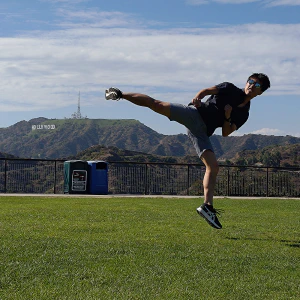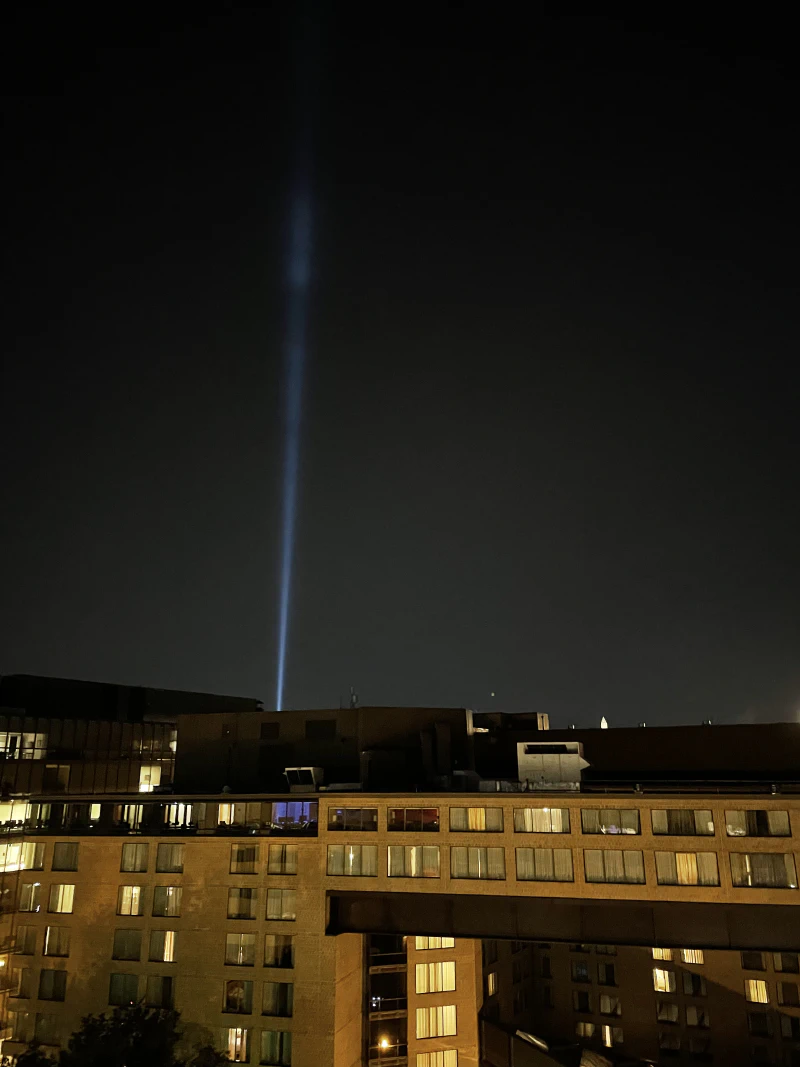Posted
on
in
Trip to D.C. and Montreal
• 949 words
• 5 minute read
Tags:
Travel, Washington D.C., National Air and Space Museum, National Postal Museum
I woke up this morning around 08:30 with the plan to meet up with Sam, Jo, and Robby at the Air and Space Museum when it opened at 10:00. However, since Robby had gotten in so late, and had flown into Dulles (which is a long way away from DC), they were pretty slow getting up this morning.
I decided to go over alone and start looking at the exhibits. On my way, I came across a 9/11 display on the mall. There were flags representing all the people who lost their lives on that terrible day.
Then I walked over to the Air and Space Museum. I always love seeing rockets and planes. Unfortunately, probably about 70% of the museum is closed for renovation. I went through the first few exhibits with a myriad of spacecraft including a moon lander. I am always so amazed when I see how primitive the technology was during the space race. And yet we landed on the moon.
One of the open exhibits was one about navigation and its relationship to time. The exhibit started with showing sea navigation clocks mounted on gimbals that seamen used for navigation. In order to calculate position on the globe, accurately kept time is required to determine longitude. Navigating in-atmosphere causes additional problems due to speed and turbulence, so many systems were devised to help airplanes navigate the skies. One that I really like is the radio signal beacons that airports used to help guide planes in. They emitted different Morse code signals at different angles such that when you were off on your approach in one direction, it gives one Morse code letter and if you go off in the other direction, it gives you a different letter. If you are on track, those two letters combine to create a single constant sound. In this way, unskilled pilots can navigate to their destination much easier than before.
Before GPS, many different systems were deployed by various branches of the military to help in navigation. GPS unified them all. One of the biggest challenges of GPS is keeping consistent, synchronized time across the fleet of GPS satellites. This requires the precision of atomic clocks. Interestingly, due to General Relativity and the gravitational pull of the Earth, GPS satellites' clocks have to be adjusted by a few millionths of a second every day.
By the time I’d made one pass through that exhibit, Sam, Jo, and Robby finally arrived. They wanted to see the time exhibit again, and I’d gone through it fairly quickly, so I joined them on another round through the exhibit. That’s the thing about the Smithsonian, though: there is so much information that you can go through an exhibit multiple times and get different information and insights from it.
We then went back and looked at all the rockets, an identical replica of the Hubble, a full-scale identical replica of the Apollo and Soyuz captules connected via the Appolo-Soyuz docking adapter, and a bunch of other cool exhibits.
After we finished at the museum, I was hungry. The rest of my friends had eaten a late breakfast, but I’d not eaten since going to a café that morning, so I got a Mexican bowl from a food truck.
We then tried to go over to the National Archives, but it required reservations, and we had not done any planning before arriving, so we didn’t have reservations. So, instead we went to the National Postal Museum. On the main level, the museum had a huge stamp collection, and in the basement, there were a bunch of exhibits about the history and operation of the postal service.
The stamp collection had stamps from all eras of stampmaking and included many rare stamps from various collections. A lot the collection was described using highly technical stamp collecting jargon which took a while to understand, but apparently it made them super rare which is cool. The one that caught my attention was a two-colored one which required the stampmaker to run the stamp through two passes one with red and one with blue ink. However, on a few batches, one of the colors got printed upside down. The particular stamp was one commemorating (I think) the first flight at Kitty Hawk, and the plane was printed upside down!
The exhibits downstairs was about the history of the postal service and the various methods that mail is moved. Pretty much all possible transportation methods have been used to tranport mail from dogsled to airplane, horseback to ocean liner, mule train to railway train. The exhibit that was most interesting to me was describing mail being transported by rail. They would sort the mail on the train and throw out bags of mail onto the platforms as the train went past the station in each town. The mail sorters had to be familiar with the entire route and figure out which city every piece of the mail had to go to.
After finishing at the postal museum we went back to my hotel room to relax for a few minutes before we figured out what to get for dinner. We ended up deciding to go to a Japanese restaurant. Sam and I shared some sushi which was very good.
We then headed back to my hotel and hung out and talked on the rooftoop pool/bar area. We could see the light beam rising into the sky from the Pentagon building in commemoration of 9/11.
Tomorrow, we are planning to go to the Building Museum. My flight leaves around 4:00, so I should have a few hours to see the exhibits before I have to head over to the airport.


